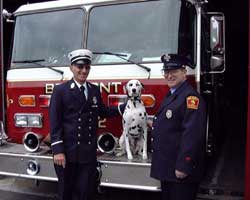S.A.F.E. Program
Student Awareness of Fire Education (S.A.F.E.)
The Belmont Fire Department continues to offer the S.A.F.E. Program which has firefighters visit local elementary schools to teach fire safety. Currently, the Belmont S.A.F.E. program is coordinated by Fire Captain David DeMarco and taught by Belmont Firefighters.
Community Support:

S.A.F.E. is made possible by generous community support
What is S.A.F.E.?
The Student Awareness of Fire Education program, a state grants program designed to put trained fire and life safety educators in the classroom to conduct fire safety education programs in grades K-12. Their primary mission is to enable students to recognize the dangers of fire and more specifically, the fire hazards that products of tobacco pose.

Who are your Belmont S.A.F.E. Educators?
Your primary S.A.F.E. educators are Firefighter Ross Vona and Firefighter Tracey Mullen of the Belmont Fire Department. Each educator represents the Massachusetts Student Awareness of Fire Education Program for the town of Belmont. F.F. Vona has 14 years of experience as a firefighter and and 6 years as lead instructor of the S.A.F.E. program. Firefighter Mullen has 13 years of experience as a firefighter and 5 years of experience with the S.A.F.E. program.
Belmont’s S.A.F.E. Program:
Modeled after the National Fire Protection Association’s “Learn Not to Burn” program, fire department educators work in conjunction with the Belmont School and Health Departments, as well as the Department of Fire Services for the Commonwealth of Massachusetts. Each lesson plan is age appropriate for the grade level taught, with special consideration given to special needs children within each grade level.
Educators discuss the following important topics: fire drills, 9-1-1, stop-drop-and-roll, smoke and carbon monoxide detectors and the importance of testing and changing the batteries in your detectors. How to crawl low in smoke, fire alarm boxes in school and around your neighborhood and the dangers of false alarms. Exit drills in the home (E.D.I.T.H.), the proper use of fire extinguishers and escape ladders, the dangers of smoking related materials, and first aid practices for burns are also discussed and demonstrated.
Children engage in fire safety activities in a friendly classroom setting. Younger students get to experience the equipment that firefighters wear in order to protect themselves in a fire and practice how to stop-listen-and-go during a school fire drill, and how to crawl low in smoke in the event of a fire, and how to use a telephone to dial 9-1-1. Each child is taught to use a telephone at a neighbor’s house or other safe place. Older students practice the proper placement of smoke detectors and discuss and demonstrate two safe ways in which to exit their home in the event of a fire. Students design a fire escape plan and a safe meeting place outside of the home for all family members to meet, and practice the proper method to activate a fire alarm box, and proper first aid practices for burns. Students of all ages learn acronyms and phrases such as E.D.I.T.H., P.A.S.S., “Get-out, Stay-out”, Stay low and go”. High School students are taught about the fire hazards and harmful effects posed by tobacco products.
Instructor questioning during and at the end of each session reinforces learning and each student is given a checklist to bring home and complete with their families. Older students are asked sit down with their family and plan a safe way out of their home.

